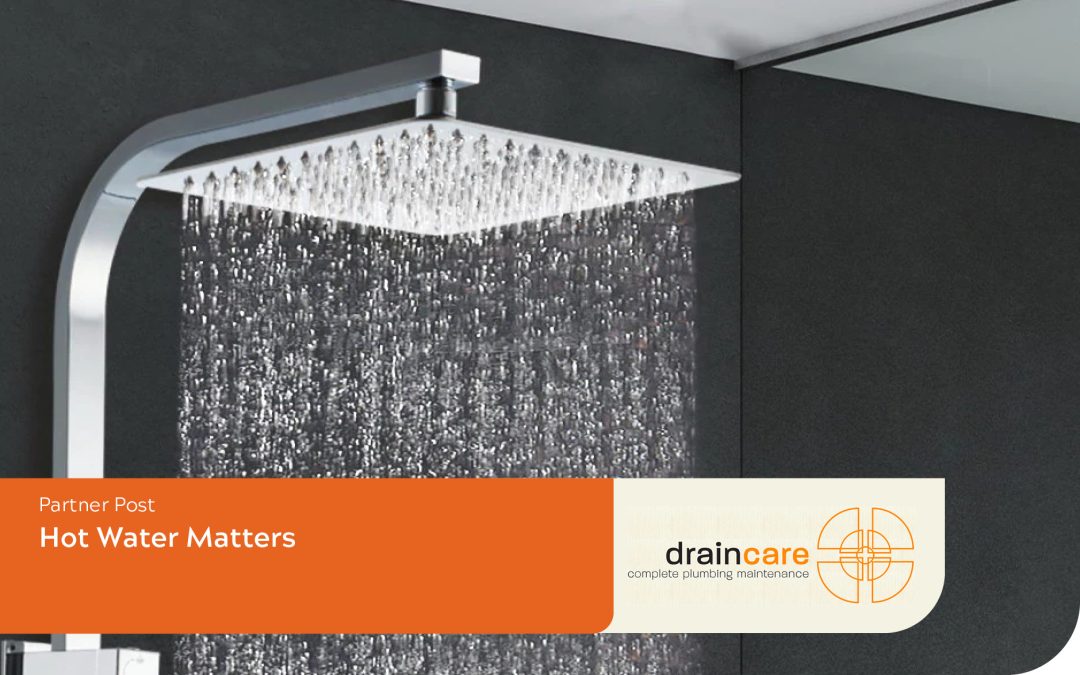The colder months are creeping up which means your hot water system will be getting more use, so this month we partnered with Draincare to share some helpful tips and checks to ensure you are well prepared.
It’s coming back to that time of year again where hot water matters. Over the hotter months, the importance of having a nice, hot shower doesn’t seem to be as big of an issue than when the overnight temperatures start hitting the teens or single figures.
As previously mentioned, keeping an eye on hot water performance throughout the year is not always a priority…until you have a cold shower!
There are various situations concerning hot water in a body corporate environment. In a communal arrangement, there is typically a main gas heater, or storage unit that can service several dwellings, and metered accordingly. Townhouses, and some older flats may have their own small electric hot water systems installed within the units. It is in the best interests of everyone to know this information before determining how best to address any issues with them. The age and location of the system is enough to start the data collection process. This will allow plumbers to determine perhaps what action to take next. Is the heater installed inside the dwelling? Has it been installed within a safety tray? How old are the expansion valves? Is there a drain for this heater, and where does it terminate?
One of the most common complaints is that the water is simply not hot enough. The easiest way to investigate further is to use a thermometer. A common probe-style digital thermometer can be easily sourced from a cooking shop, or online. Running the hot tap and measuring the temperature quickly tells a story.
Upon attending for such an issue, determining the location of the main heater is normally the first priority. This allows the plumber to determine if the storage unit is cold, or hot. If cold, this issue may be as easy as re-igniting the heater in the case of being a gas appliance. But if the main heater is measuring “normal” ( from 60-70 degrees C), then access to the affected dwelling is necessary. If the main storage temperature is known, any other temperature within the dwelling will assist with identifying the hydraulic makeup. For example, 62 degrees at the main heater, but only 42 at the vanity basin shows that a tempering device has been installed, and may be old, or starting to fail. These devices can be located within the dwelling, either under the vanity, laundry tub, or perhaps underneath in a basement area, depending on the building design. If the kitchen or laundry taps measure higher than 50 degrees, then the dwelling has been plumbed with “tempered” and “non-tempered” hot water pipework.
By law, all new bathrooms must have their hot water pipework tempered, by the use of a tempering device, normally called a tempering valve. These valves require a cold water supply and hot water supply. Factory-set, these devices mix the hot and cold water to achieve a nominal 50 degree outlet temperature. This temperature has been determined to be safe enough to prevent scalding. However, over time, the internal wax element of the valve can wear, reducing the outlet temperature. They are designed to cut off total outlet water supply if the cold water flow is reduced or stops. Nonetheless like any other valve, their performance drops off after several years until replacement is necessary. Depending on their location, these valves can be a body corporate concern if they are installed as part of the complete pipework system, or a private concern if installed within a dwelling.
